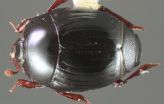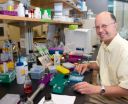(Press-News.org) With biomedical scientists struggling to collect and analyze millions of gigabytes of data in their efforts to improve human health, the National Institutes of Health has launched a $700 million project to develop a common data-sharing framework and start training future scientists to tap that gold mine of information. That's the topic of a story in the current edition of Chemical & Engineering News (C&EN), the weekly newsmagazine of the American Chemical Society, the world's largest scientific society.
Britt E. Erickson, C&EN senior editor, explains that biomedical researchers are beginning to tap into a gold mine of nontraditional sources of data to unravel some of the complexities of human diseases. That's especially true for common diseases for which there is significant interplay between genetic variants and environmental stressors. But there is so much data being generated from so many different disciplines that it is a challenge to integrate it all.
The story describes a plan from the NIH, called Big Data to Knowledge, to bring all of the data together into one common data-sharing framework that is easily accessible by researchers. Universities will train students in data sciences so that they can better access and process the data. The integration of all of the data will allow for improved efficiency in research to help treat and cure some of the world's diseases, the story states.
###
The American Chemical Society is a nonprofit organization chartered by the U.S. Congress. With more than 163,000 members, ACS is the world's largest scientific society and a global leader in providing access to chemistry-related research through its multiple databases, peer-reviewed journals and scientific conferences. Its main offices are in Washington, D.C., and Columbus, Ohio.
To automatically receive news releases from the American Chemical Society, contact newsroom@acs.org.
Follow us: Twitter Facebook
Using millions of gigs of data to improve human health
2013-02-20
ELSE PRESS RELEASES FROM THIS DATE:
Little did we know about beetle diversity: Astonishing 138 new species in a single genus
2013-02-20
The tropics are home to an extraordinary diversity of insect species. How great is it, exactly? We do not know, but today, researchers at the Santa Barbara Museum of Natural History published a study on tropical beetles that can help us progress towards an answer to this question. The paper was published in the open access, peer-reviewed journal Zookeys.
Entomologists Michael Caterino and Alexey Tishechkin have named 138 new species within the genus Operclipygus (the name refers to their clamshell-like rear end), thereby increasing the size of the genus over six times. ...
Potential benefits of inertial fusion energy justify continued R&D
2013-02-20
WASHINGTON -- The potential benefits of successful development of an inertial confinement fusion-based energy technology justify investment in fusion energy research and development as part of the long-term U.S. energy R&D portfolio, says a new report from the National Research Council. Although ignition of the fusion fuel has not yet been achieved, scientific and technological progress in inertial confinement fusion over the past decade has been substantial. Developing inertial fusion energy would require establishment of a national, coordinated, broad-based program, ...
Molecules assemble in water, hint at origins of life
2013-02-20
The base pairs that hold together two pieces of RNA, the older cousin of DNA, are some of the most important molecular interactions in living cells. Many scientists believe that these base pairs were part of life from the very beginning and that RNA was one of the first polymers of life. But there is a problem. The RNA bases don't form base pairs in water unless they are connected to a polymer backbone, a trait that has baffled origin-of-life scientists for decades. If the bases don't pair before they are part of polymers, how would the bases have been selected out from ...
Being stoic for the spouse's sake comes at a high cost
2013-02-20
Among life's many tragedies, the death of a child is one that is perhaps the greatest for parents. No matter what the age of the child or the cause of death, the irrefutable fact of the loss is one that shatters the normal cycle of life, leaving parents traumatized and often incapacitated by grief.
Research on coping with bereavement has focused primarily on the individual, despite the fact that family and married relationships are all profoundly disrupted by the loss. But in the wealth of studies about parental grief, little attention has been paid to precisely how couples ...
Study: Resveratrol shows promise to protect hearing, cognition
2013-02-20
DETROIT – Resveratrol, a substance found in red grapes and red wine, may have the potential to protect against hearing and cognitive decline, according to a published laboratory study from Henry Ford Hospital in Detroit.
The study shows that healthy rats are less likely to suffer the long-term effects of noise-induced hearing loss when given resveratrol before being exposed to loud noise for a long period of time.
"Our latest study focuses on resveratrol and its effect on bioinflammation, the body's response to injury and something that is believed to be the cause of ...
Children with brain lesions able to use gestures important to language learning
2013-02-20
ATLANTA – Children with brain lesions suffered before or around the time of birth are able to use gestures – an important aspect of the language learning process– to convey simple sentences, a Georgia State University researcher has found.
Şeyda Özçalışkan, assistant professor of psychology, and fellow researchers at the University of Chicago, looked at children who suffered lesions to one side of the brain to see whether they used gestures similar to typically developing children. She examined gestures such as pointing to a cookie while saying "eat" to ...
The ethics of access: Comparing 2 federal health care reform efforts
2013-02-20
ANN ARBOR, Mich. — Two major health reform laws, enacted 25 years apart, both try to meet an ethical standard to provide broad access to basic health care. Neither quite gets there -- but it's not too late for modern health care reform to bring the nation closer to a goal of comprehensive and coordinated care for all.
That's the conclusion of a commentary published in the new issue of the Journal of the American Medical Association by a team of University of Michigan Health System physicians.
The authors – a family physician, an emergency physician and a primary care ...
Smoking cessation in old age: Less heart attacks and strokes within 5 years
2013-02-20
Professor Hermann Brenner and colleagues analyzed the data of 8.807 individuals aged between 50 and 74 years using data of Saarland citizens. "We were able to show that the risk of smokers for cardiovascular diseases is more than twice that of non-smokers. However, former smokers are affected at almost the same low rate as people of the same age who never smoked," says Brenner. "Moreover, smokers are affected at a significantly younger age than individuals who have never smoked or have stopped smoking." For example, a 60-year-old smoker has the same risk of myocardial infarction ...
Setting the record straight on Medicare's overhead costs: New study
2013-02-20
The traditional Medicare program allocates only 1 percent of total spending to overhead compared with 6 percent when the privatized portion of Medicare, known as Medicare Advantage, is included, according to a study in the June 2013 issue of the Journal of Health Politics, Policy and Law.
The 1 percent figure includes all types of non-medical spending by the Centers for Medicare and Medicaid Services plus other federal agencies, such as the IRS, that support the Medicare program, and is based on data contained in the latest report of the Medicare trustees. The 6 percent ...
MIT researchers build Quad HD TV chip
2013-02-20
CAMBRIDGE, MA -- It took only a few years for high-definition televisions to make the transition from high-priced novelty to ubiquitous commodity — and they now seem to be heading for obsolescence just as quickly. At the Consumer Electronics Show (CES) in January, several manufacturers debuted new ultrahigh-definition, or UHD, models (also known as 4K or Quad HD) with four times the resolution of today's HD TVs.
In addition to screens with four times the pixels, however, UHD also requires a new video-coding standard, known as high-efficiency video coding, or HEVC. Also ...

